From a young age, I was enamoured with fashion, woven into a world of colour, texture, and prints. Psychotropical blooms would dance with loud polka dots, a delicious harmony of stylistic prowess. Tropical prints would transport me back to warmer climes, blue and white embroidered linen dresses a nod to my Mediterrenean heritage, the spirit of Madeira in my humble wardrobe. From watercolour kimonos thrifted from Depop, to breathtaking equsitely laced ballgowns, paired with ornate jewelled crowns, I lived and breathed fashion, as though it was my life juice. Vibrant flower crowns whispered to sophisticated pearl berets, while maximalist statement earrings begged for attention, clawing its way out of the organized sea of accessories, that stood with pride on my mantlepiece. To the average visitor, they would softly exclaim that I had a lot of clothes, shoes, and accessories, wondering how I would be able to wear everything. But what they didn’t know was how invested I was in sustainable fashion tips, in order to create a more ethical wardrobe. Many of my clothes were second hand and thrifted, and when they were new, I would create a ‘rotating wardrobe’, where I would ensure I would wear all the clothes I had brought.
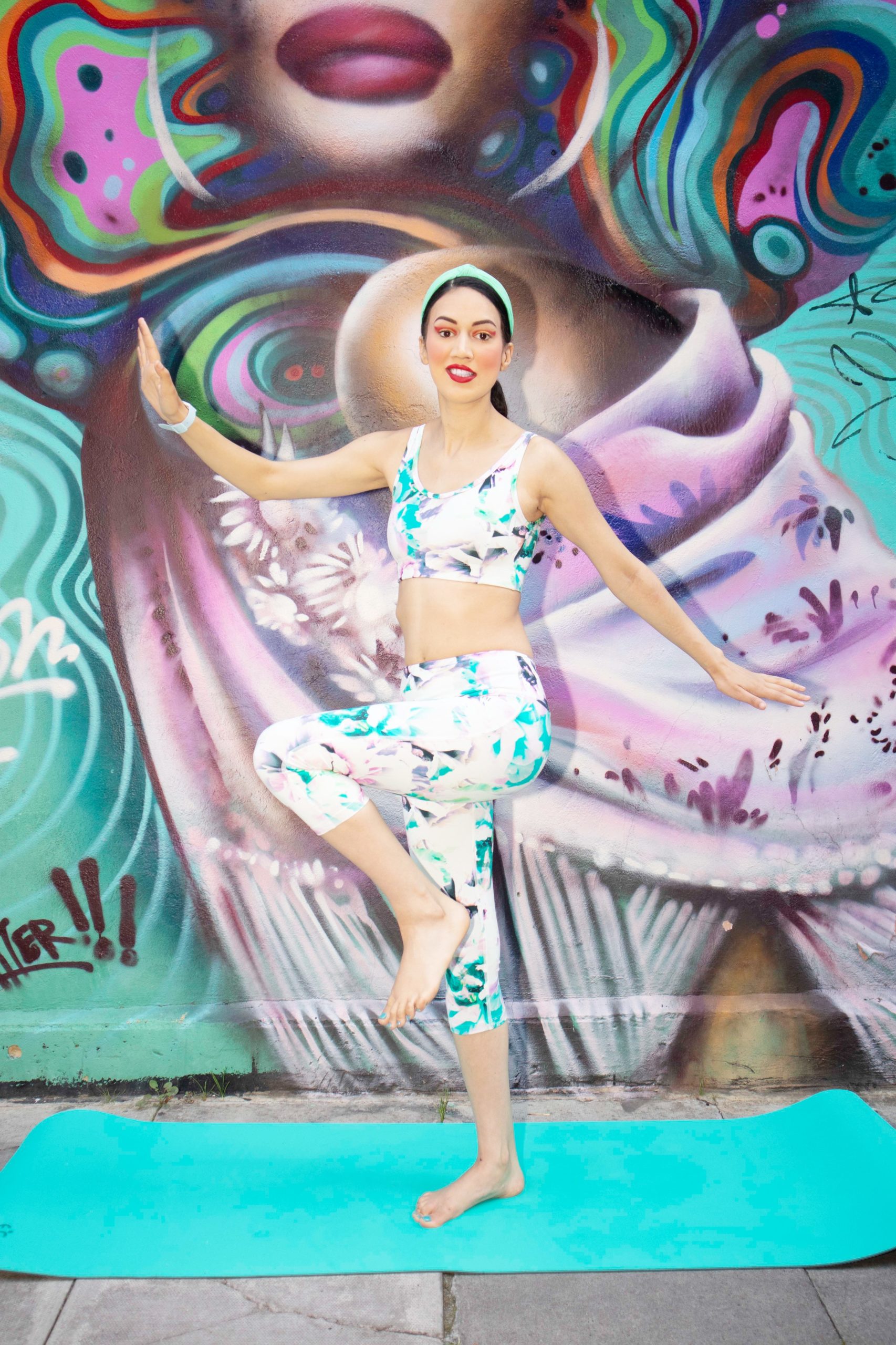
I can almost sense your confused expression, what on earth is a rotating wardrobe? Well, put simply, rotating your clothes, helps you ‘show your clothes love’, and organise your wardrobe. I have three wardrobes, all organized by clothing type, colour, and wearability. When I know I have not worn a clothing item very many times, I put it into the ‘first wardrobe’, which is the priority wardrobe, in order to change my approach to fashion. This shows me whether I should keep clothing, if I should donate it to charity, to a clothing swap shop, or give it to friends and family. Rather than selling my clothes, I normally choose to donate my clothes to those who need it the most. By rotating my wardrobe, I am able to create beautiful wardrobe staples, that help define my personal style, as well as making me accountable for the clothes that I have.
It wasn’t just donating, rotating and swapping clothes that proved how commited I was to being kinder to the planet. I was never afraid to wear the same thing, over and over again, dismissing the notion that you should only be seen in the same outfit once. That ethos is not only superficial and shallow, but it is also ignorant, encouraging us to tap into a ‘fast consumerist culture’, where we dispose of the clothes as quickly as we wear them. Now, I will be the first to hold my hands up and say yes, I do buy from ‘fast fashion brands’ and I do need to be held accountable for that. However, one thing I am not guilty of is ‘buying clothes and chucking them’. Not only do I buy clothes every few months, but I also buy from a mixture of sustainable and fast fashion brands, and make sure that I wear everything that I buy. A lot of thought goes into the clothing that I buy, and while it is true that I buy from ‘fast fashion brands’ as I am on a budget, I never ever wear clothing that isn’t cruelty free and vegan. I wear non-animal materials, and am passionate about supporting fashion brands, who share the same ethical, cruelty-free values as I do. I don’t wear leather, wool, silk, suede or any other animal materials, and some clothes have been in my wardrobe for 10+ years!
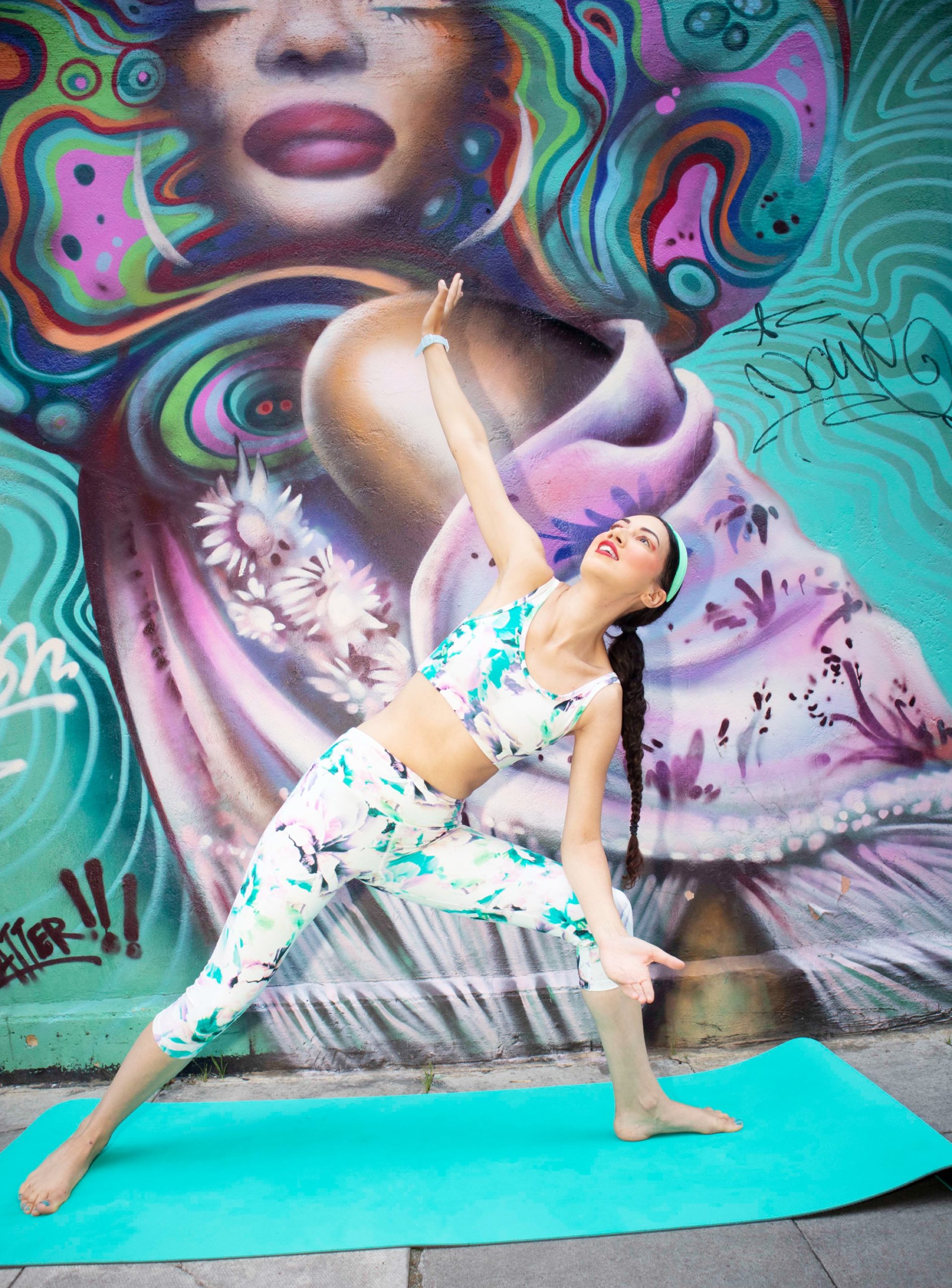
Bamboo Clothing is a great brand to support when you are trying to improve your knowledge of sustainable fashion tips.
As a cruelty-free shopper, the way that I shop is carefully thought out. I buy from brands who love and care for animals as much as I do, try and educate myself on clothing companies who are eco-friendly, and look for ways that I can create a more ethical wardrobe. In lockdown, I changed my attitude to fashion, and the types of clothes that I was wearing. Not only was I spending less money on clothes, but I was also investing in comfy, yet stylish loungewear and athleisure pieces, which could be worn for relaxing, working out, meditation and yoga. They say that the clothing you buy defines your mental headspace, and I can say that the saying is true. In a world defined by chaos, we seeked solace in comfort. Gone were the ballgowns, the sequin jumpsuits, and the extravagant suits, and its place were slouchier, wearable fits, that made you feel like you had been wrapped in comforting cotton wool. My love for maximalism never went away, but as I was excercising more, I began searching for athleisure that would give me the mental clarity, that I needed and deserved.
From yoga leggings, to tracksuits, right through to thermal jumpers, I went from rarely excercising to doing yoga, pilates, running, cardio and abs. I practiced mindfulness and meditation, and sought out sustainable clothing that would help me on my fashion, mental health and fitness journey. I was new to this fitness lark, but the journey was beautiful, finding out what clothing would give me the peace and tranquility that I deserved and needed. At first my choices were poor, ill fitting sports co-ords that made me feel conscious of my body, uncomfortable in my own skin. But as I did my research, and sought out athleisure made from natural materials, I realized that sportswear deserved my investment just as much as my beloved ballgowns, hats, and crowns did, if not more so. Because here were clothes that had the opportunity to change my life, that would boost my confidence, get me moving, and in turn improve my knowledge of sustainable fashion tips. It was after lockdown that I discovered Bamboo Clothing, a sustainable bamboo based fashion brand, who would give me the right athleisure I needed to be the ultimate yogi, and find my inner peace.

Founded in 2006, Dave wanted to create an environmentally viable clothing brand, where Bamboo was the star material. But why bamboo I can hear you asking impatiently? Well, when it comes to fashion, bamboo needs half the land cotton needs to produce the same amount of fibre and it does not need irrigation or pesticides. A natural material, free from chemicals, I realized that wearing bamboo was not just good for the environment, but also good for me. Naturally hypo-allergenic, gentle on the skin and highly breathable, it would keep my skin cool in the summer, and warm in the winter, by wicking any excess moisture away. As I took Bamboo Clothing’s stunning yoga set for a spin, I realized that it was an excellent performance fabric when I was working out, and it looked cute to boot. It showed me that being kind to the planet, meant being kind to myself too. After all, when we wear clothing that is harmful to the environment, we are also harming ourselves. When we work in harmony with Mother Nature, we are rewarded.
As an eco-conscious consumer, wearing bamboo has shown me to favour natural materials. However we all know that the clothing industry is one of the worst for pollution. The fashion sector is responsible for 10% of global carbon emissions, which is more than international flights and maritime shipping combined. So what can we do to reduce our fashion footprint, what sustainable fashion tips should we adopt, and how can we create a more ethical wardrobe in the process? From investing in sustainable brands who care about the environment, to wearing clothes for longer, right through to upcycling old clothes, here are 7 actionable fashion tips to becoming a more ethical consumer.
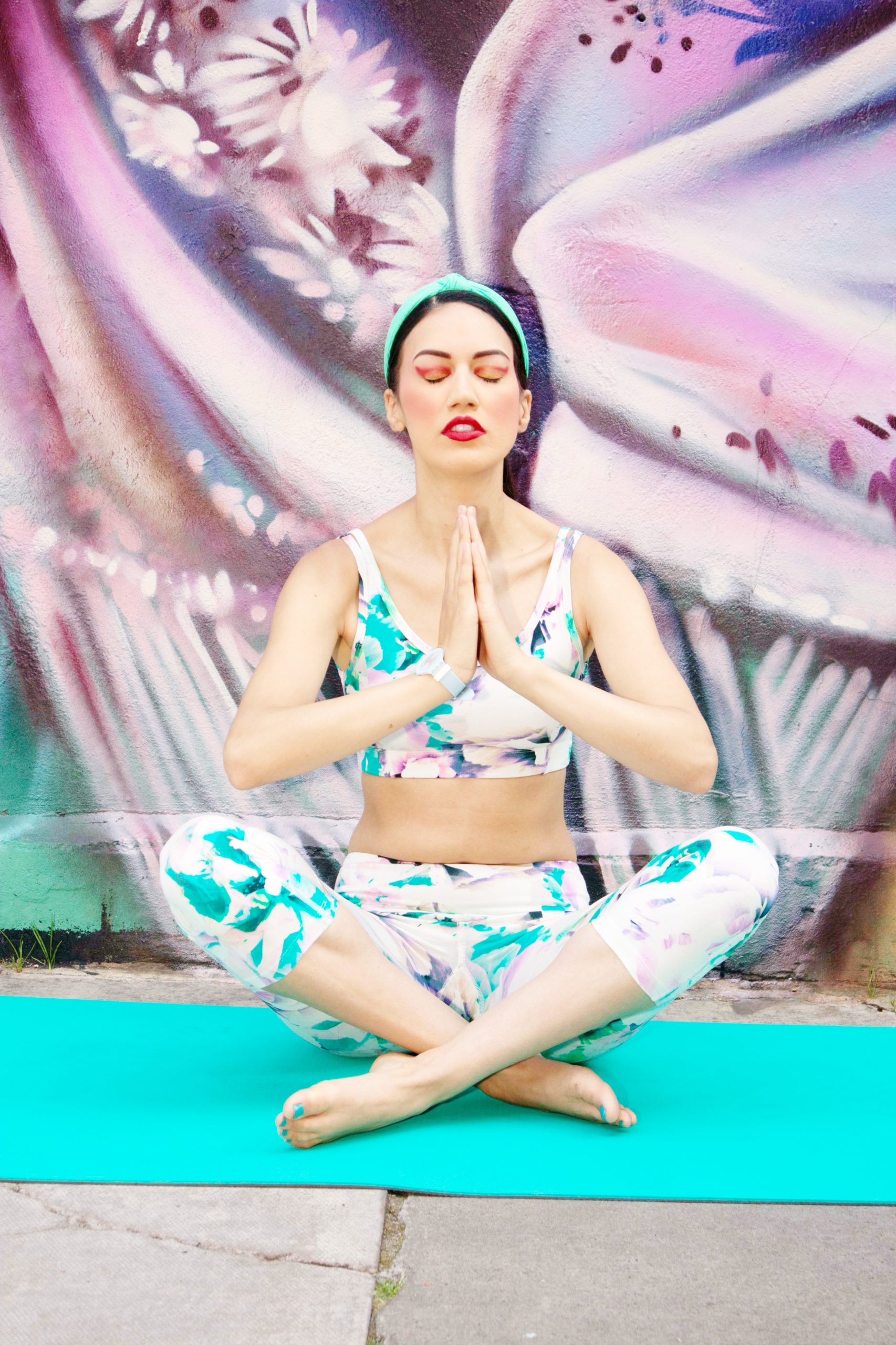
During the pandemic sustainable fashion tips helped me to create a more mindful , balanced wardrobe. I began wearing loungwear, knitwear and athlesuire pieces that improved my state of mind.
Take Part In The #DaretoWearLonger Challenge
In sixth form, ignorant of the implications of fashion on the environment, I challenged myself to never wear the same outfit twice. Though there was elements of my outfit that were the same, I would never wear the same exact outfit again. I would turn dresses into skirts, pinned back with a statement belt, and skirts into tops, always changing up my look, for two consecutive years. While it was good that there were parts of my outfit that were the same, I was foolishly buying into the notion that noone should see you in the same outfit twice. I was terrified that I would be seen as ‘lame’ and going from someone who had no sense of style, to a bona-fide source of fashion inspiration, pressured me into making unsustainable fashion choices. It wasn’t that I was constantly buying clothes, because I didn’t have that kind of money, but it was that I was wasting water, energy and time, while other clothes in my closet lay unused, and unloved for years down the line. As I grew older, I grew out of this mindset, and to this day, I can comfortably allow people to see me in the dress, suit, or jumpsuit, without feeling like I am any less ‘fashionable’. When I wear clothes more than once, it not only saves me washing, but it also makes my clothes last longer.

Why? Because the more we wash clothes, the more we decrease the lifespan of our clothes. Clothes become bobbled, frayed, and the colour gets faded a lot quicker, when you wash clothing after one use. That’s why I am taking part in the #DaretoWearLonger challenge, to not only change up my fashion game, but to also reduce my ecological fashion footprint. Although I comfortably wear the same outfit twice, thrice, and more, what I have never been comfortable with is not washing ‘said clothing’ when I perceive it to be ‘dirty’. But here’s the T, if you have worn a dress for a few hours, it does not need to be washed. If you have worn a coat, it can take a couple of wears before it really needs to get washed. As for athleisure, sets like the one pictured, can be washed after 2-3 wears. It is only underwear that should be washed immediately after wearing it, as wearing it more than once can lead to intimate infections.
So what is the #DaretoWearLonger challenge? BAM (Bamboo Clothing) is encouraging its followers to wear their tops for up to a week, to help make our world a better place. Your immediate response might be ew, that’s nasty, and I admit that was my first impression. However, when I educated myself and realized it would reduce my carbon footprint, save money, and most of all teach me to show my clothes infinite love, I realized that I could ‘dare to wear longer’. Now I will say that I can only go 2-3 times without washing a single item, but that is a vast improvment from the days where I was washing my clothes everyday, two times a day, because I was obsessed with being clean. Now, after I have taken part in the challenge I can comfortably wear the same athleisure set for at least three wears, am washing my coats less, and have also started handwashing some clothes like underwear, dresses, and trousers to minimize my carbon footprint. When it comes to sustainable fashion tips, Bamboo Clothing has been an invaluable resource in challenging my fashion beliefs, becoming climate positive, and thinking carefully about the clothes that I wear. After all, when you wear your BAM kit, you are supporting a brand that is eco-friendly, cruelty-free, and anti-waste.
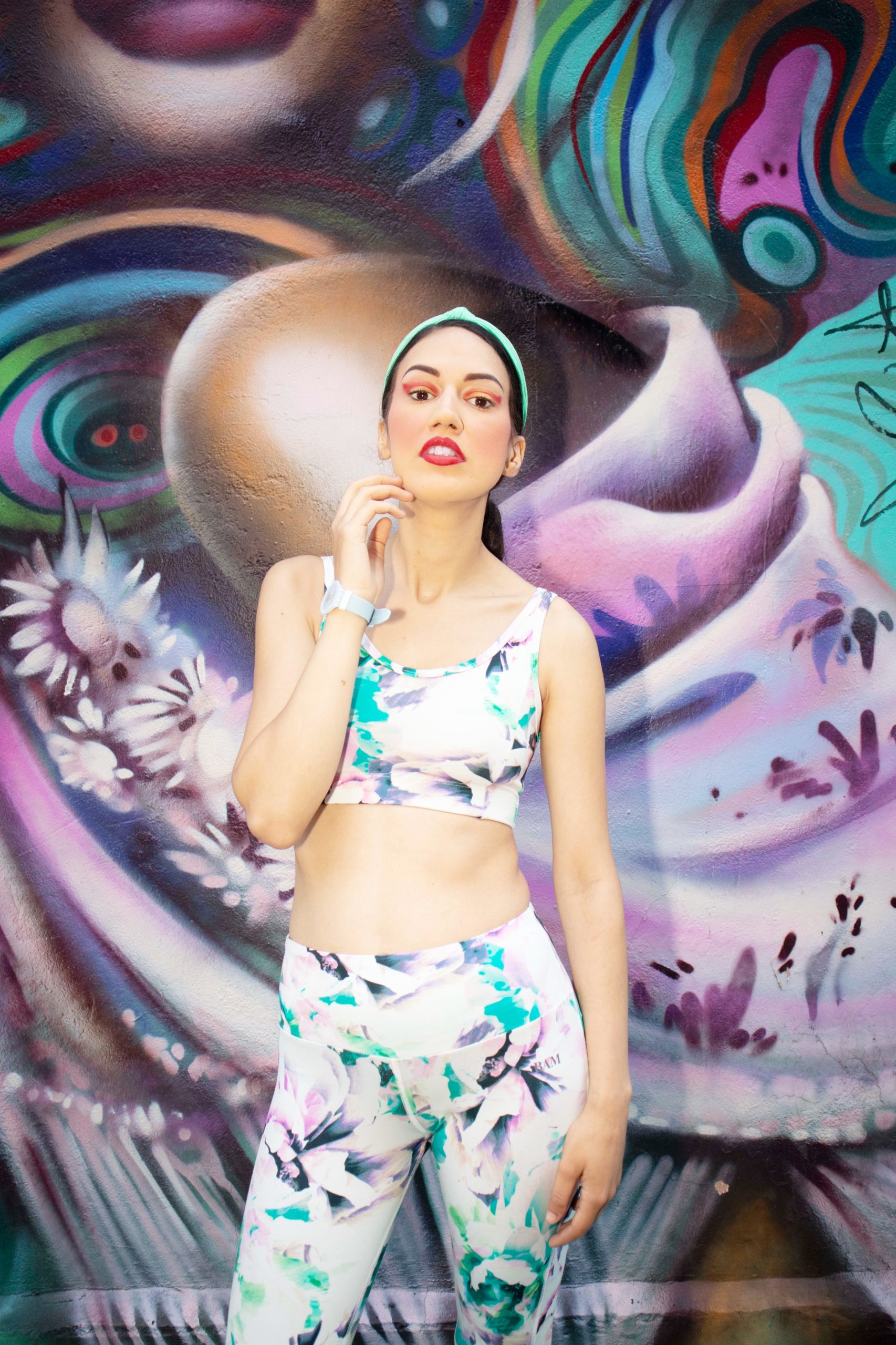
Curating a yoga wardrobe is easier than you think with sustainable fashion tips that will help you choose natural materials like bamboo.
From the moment their bamboo is harvested, right through to you buying and washing your BAM clothing, you can feel good knowing you are giving back to mother nature. A brand that wants to reduce their carbon footprint to zero by 2030, I feel proud knowing that BAM is also encouraging its customers to ‘wear, buy, and wash’ less. As a self-confessed maximalist, I had already confessed earlier my previous struggles with wearing the same thing again, let alone reducing the number of laundry trips that I would make. However as a recovering fashionaholic, I can safely say that this challenge has helped me get creative with styling the same clothes, taught me to wear clothes on repeat, and get serious about educating myself on clothing and its impact on the environment. After all, 14.8% of the emissions created throughout a T-Shirt’s lifetime is created by sticking it in the washing machine. When you wash at 40°c and tumble dry your clothes, this multiplies the carbon emissions to 2.4kg of carbon emissions!
You can already reduce your fashion footprint by washing at 30°c and drying your clothes on an airer. However, for the best results washing your clothes every second or third wear, will help you save the planet. But what about smelliness? We all know that clothes can get smelly, which makes us immediately reach for the laundry basket. This is because synthetic materials like polyester, makes sweat collect at the top of fabric, resulting in sweat stains. When you use bamboo however, the fibre structure absorbs moisture really effectively. It’s 40% more absorbent than organic cotton, and feels great on your skin as you are working out. Trust me I should know, I am officially obsessed.
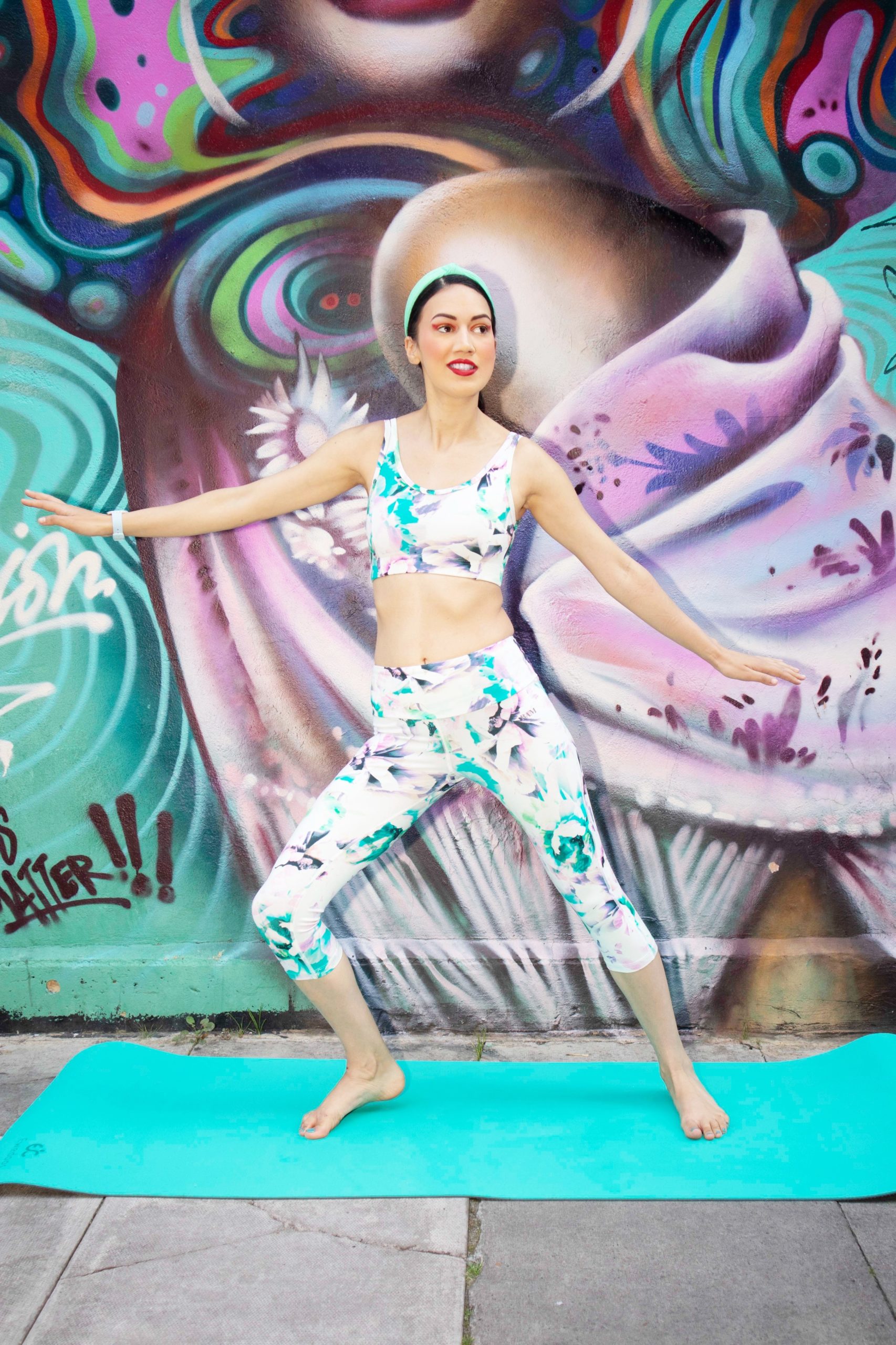
Choose Clothes Made From Natural Materials Like Bamboo
I wear natural materials not only because I am cruelty free, but also because I want to look and feel good. When I wear bamboo, I feel like I am embraced in a warm hug, where my sensitive skin is caressed with love. I find man-made fabrics itchy, and uncomfortable, and certain materials aggravate my sensitive skin causing rashes, spots and flare ups. Bamboo regulates your body temperature naturally, meaning that when you are working out, you don’t overheat, but you also are not chilled to the bone either. Instead you feel ‘comfortable’, in soft clothing, which soothes aggravating areas of the body which is already irritated or inflamed. For me that is my back, chest, and stomach, so its important that sustainability, and self-care goes hand in hand. After all, when it comes to me sharing my sustainable fashion tips, wearing natural materials would be number one, purely because of how it makes you feel. As bamboo is anti-static, it also makes it the perfect material for allergy prone skin, like mine.

Bamboo clothing is a fantastic performance fabric which makes it ideal for working out. When it comes to sustainable fashion tips, using bamboo is top of the list.
From an environmental point of view, bamboo stays fresher for longer. It needs less washing as it reduces excess moisture and drastically decreases the carbon footprint of your clothing. While cotton and linen are also great materials you can use for your clothing, bamboo is the most eco-friendly alternative. Planet positive and the world’s most renewable material, bamboo grows rapidly, needs very little water and sequesters a large amount of carbon dioxide, absorbing five times more carbon dioxide and 35% more oxygen than similar plants. Put simply, bamboo clothing helps you create an eco-friendly closet, while protecting the environment. Not convinced? When it comes to working out, bamboo is an excellent performance fabric as it is anti-deodorising, anti-bacterial and breathable. Just remember that when you are choosing your bamboo clothing, you need to look carefully at whether the brands are creating material blends, or adding any synthetic fibres. Often what you will find is they will blend bamboo and cotton, or use chemically produced bamboo.
The best option? Bamboo Lyocell, is made from bamboo pulp, uses fewer chemicals and water, and is the most eco-friendly type of bamboo. Bamboo fabric like lyocell is also biodegradeable, where it takes around a year or more to biodegrade. Although bamboo fabrics are biodegradable, not all are eco-friendly, which is evidence of greenwashing in mainstream fashion. Often brands who claim that they are sustainable, are actually not, with 60% of companies environmental claims being classed as ‘unsubstantiated’ and ‘misleading’. That’s why I choose to buy natural materials from brands who are transparent about the material blends they use, their supply chain process, and their commitement to offsetting climate change. When we become ‘impact positive’, we look at how we can make the clothes we ‘design circular’. So if a brand is transparent about the fact that they only make clothes that they know how to dispose of, this is a great brand to support.
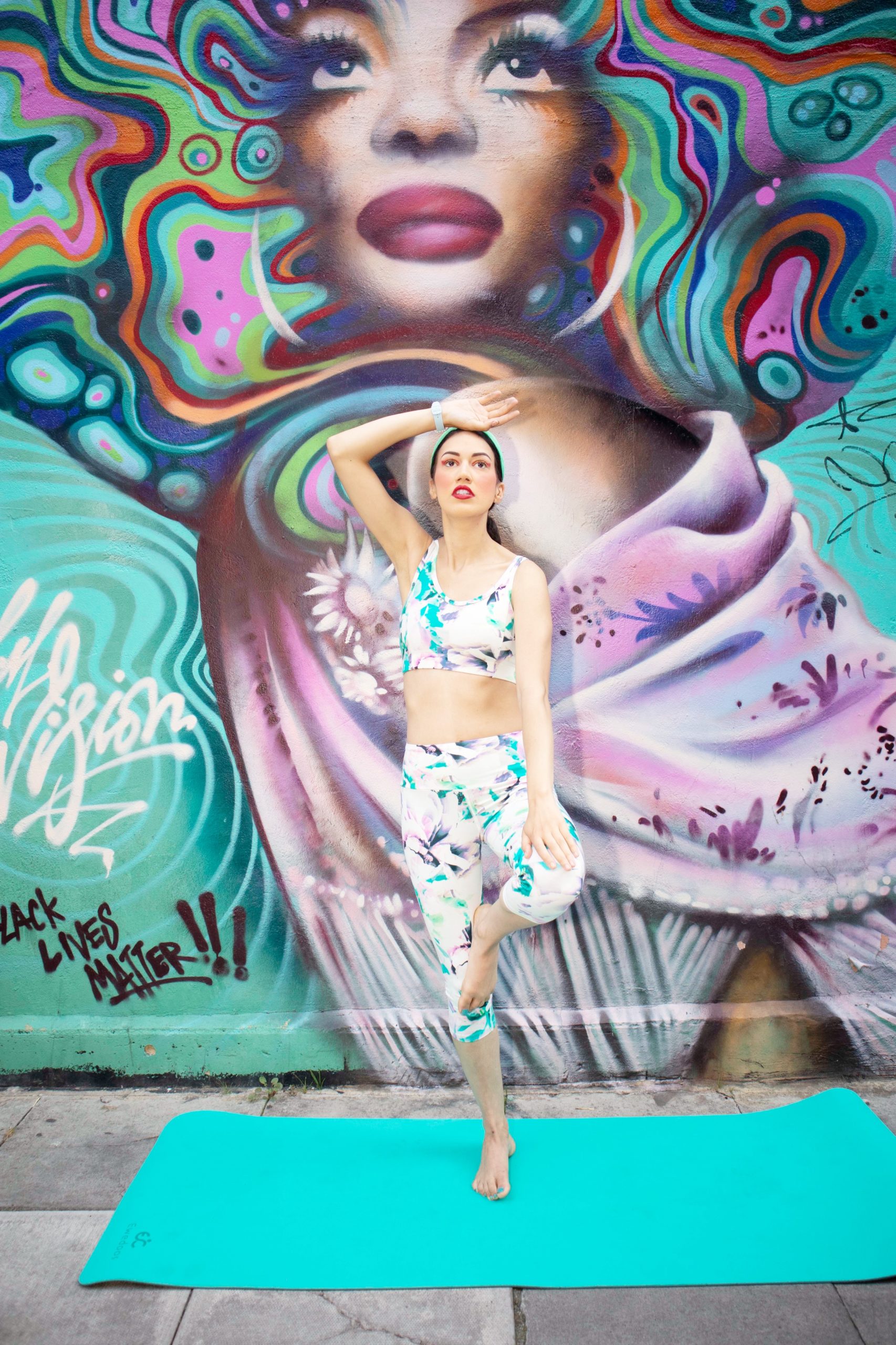
After all, if we buy clothes that we don’t know whether we will wear, this negatively impacts the environment. Bamboo is a long-lasting material, that is well worth the investment, and teaches us to wear clothes over, and over again. When we measure our impact on the environment, we become more conscious of the good and bad habits that we have, particularly when it comes to fashion. We already know that fashion has one of the largest impacts on climate change, so its up to us, to change the way that we buy, consume, and approach fashion. To me that means investing in natural materials that are eco-friendly, wearing clothes over and over again, and reducing the temperature that I wash my clothes at. These small changes, equate to a better relationship with the world that I live in, and I am proud of that. As I educate myself on the importance of being kinder to the planet, I am hoping that others will follow suit. After all, we want generations to come to enjoy the natural beauty and wonder of our universe.
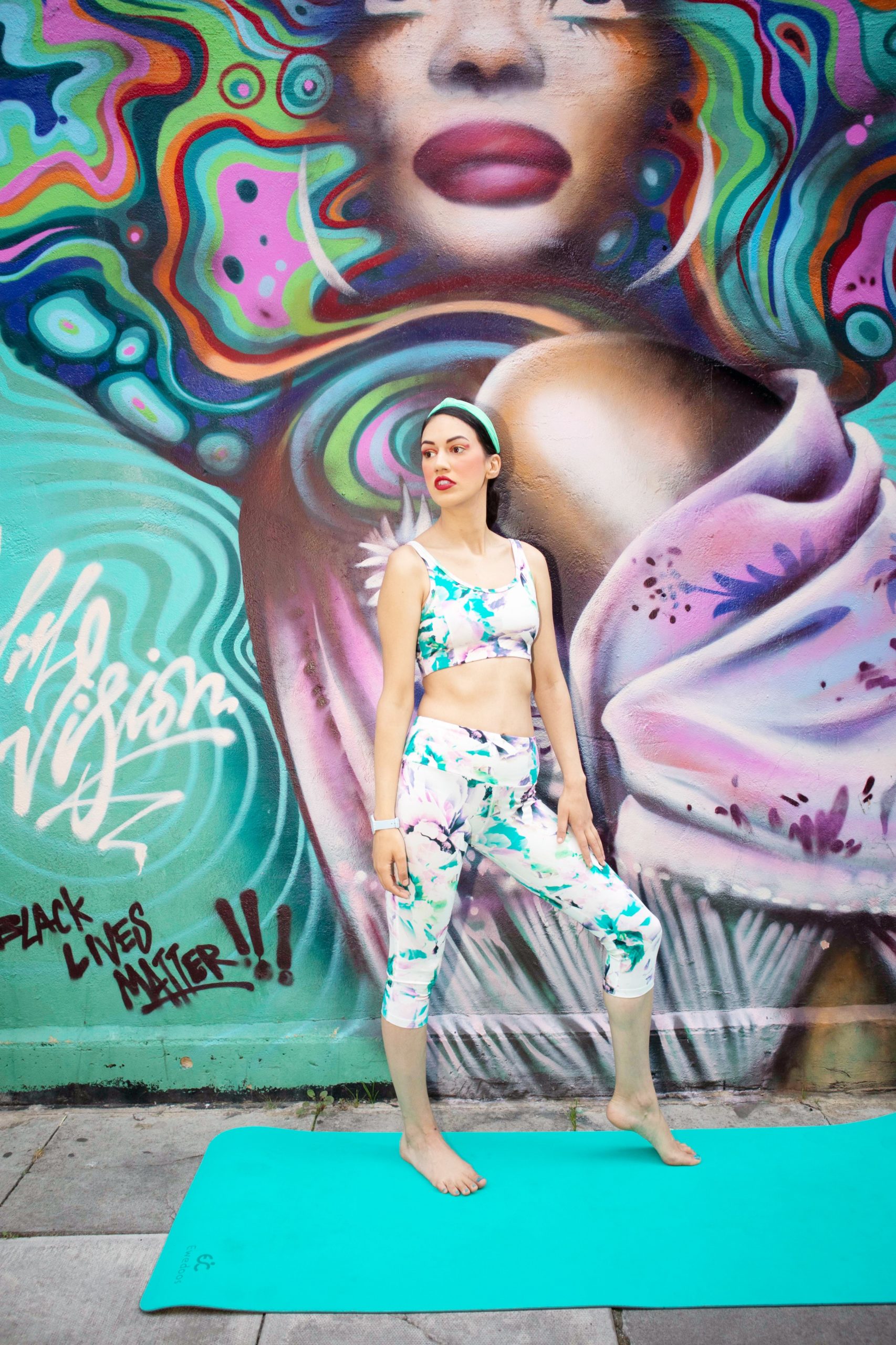
Thrift At Charity Shops, Car Boot Sales And On Depop
Thrifting, and shopping at charity shops is one of my favourite ways to find unexpected clothing finds. Not only do I donate to a different charity each month, meaning my clothing purchases are ‘doing good’, but it also helps me stand out from the crowd in pieces that are sustainable, good for the planet, and unique. From flower crowns, to belts, dresses, trousers, and jumpsuits, I love giving second-hand clothes a new home, so that it has a new lease of life once more. When it comes to sustainable fashion tips, buying at charity shops, car boot sales or on apps like Depop can really help you create the ethical wardrobe of your dreams! This is especially prevalent when you are moving house, and are trying to create space, especially if you are downsizing. Not only can you schedule a driver to pick up your clothing, and donate it to a charity of your choice, but you can also make a monetary donation, and create a difference by giving your clothes to others to use again.
As I mentioned clothing is cyclical, so rather than throwing away your unwanted clothes, donate, and give your clothes as much as you can. You can donate them to clothing banks, set up your own carboot sale, or even use sites like Ebay to sell your unwanted clothes. Even if you no longer have use for your clothes, someone out there will. Your support means that these charities can give back, and they rely on regular donations and customers to do that. By choosing to shop in a charity shop, you are helping them stay open, while funding a great cause. Whether it is a charity that supports mental health, children, animals or homelessness, you are tapping into an ethical shopping movement. Not only this but shopping at charity shops, car boot sales and on online selling platforms makes your ‘buying experience’ more affordable, as you get discounted goods, often for a fraction of the price. Although you might not find the exact thing you were looking for, you have the potential to find something that is even better than you imagined.
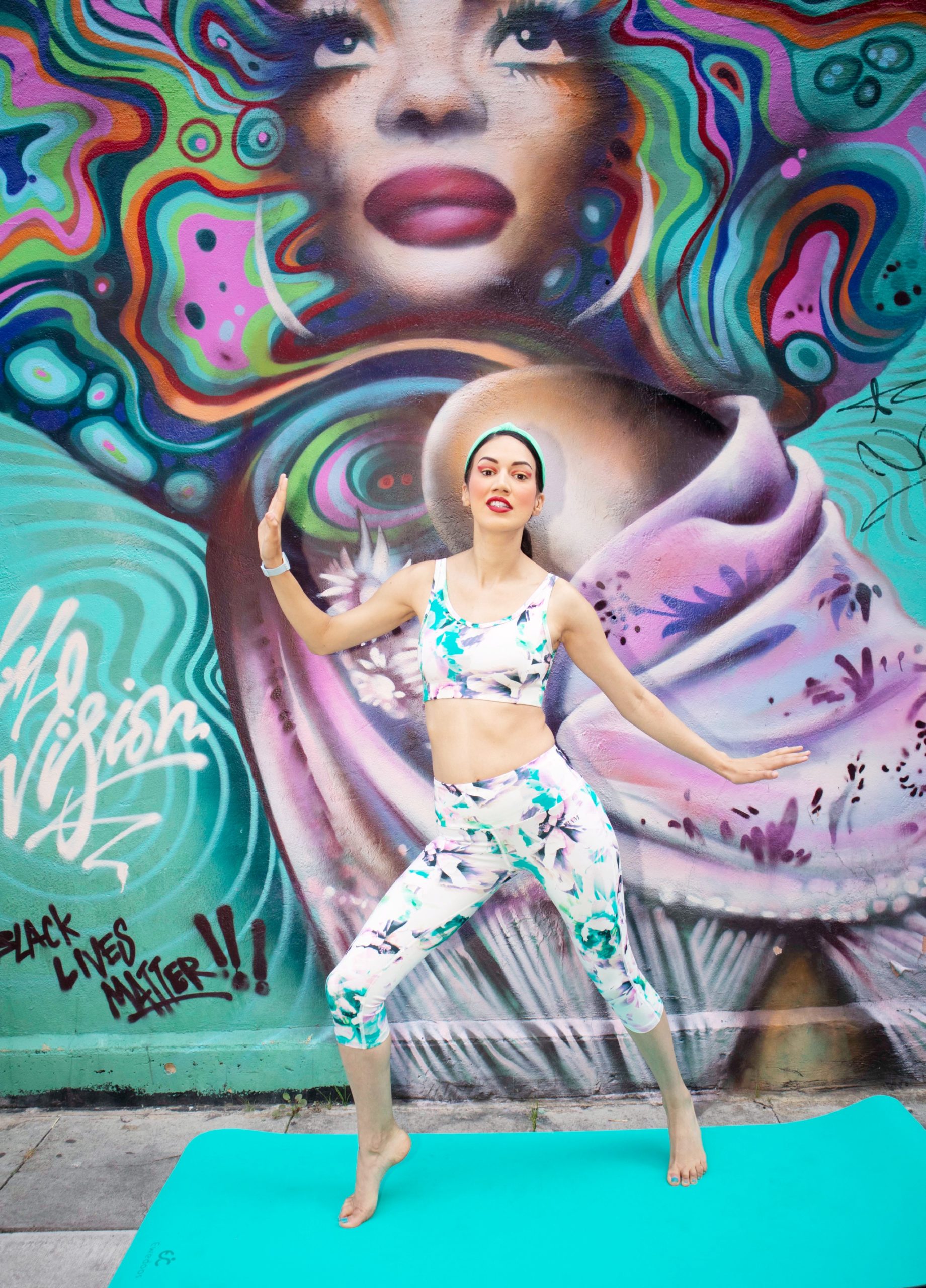
Thrifting as we established is for the most part environmentally friendly. It’s not perfect, but what it does give you is the opportunity to save clothes that were originally destined for landfill. Although they don’t sell every person’s donation (if its not in a sellable condition), they try their best to sell what they can. It is important to note that when you donate clothing, it should still be ‘wearable’, so nothing that is broken, stained, or completely faded. This will minimize the possibility of your clothing getting thrown, and wasted, which can definitely be avoided. When you think consciously about the donations you can make from your wardrobe, you are becoming impact positive, offsetting the fast fashion ‘food chain’.
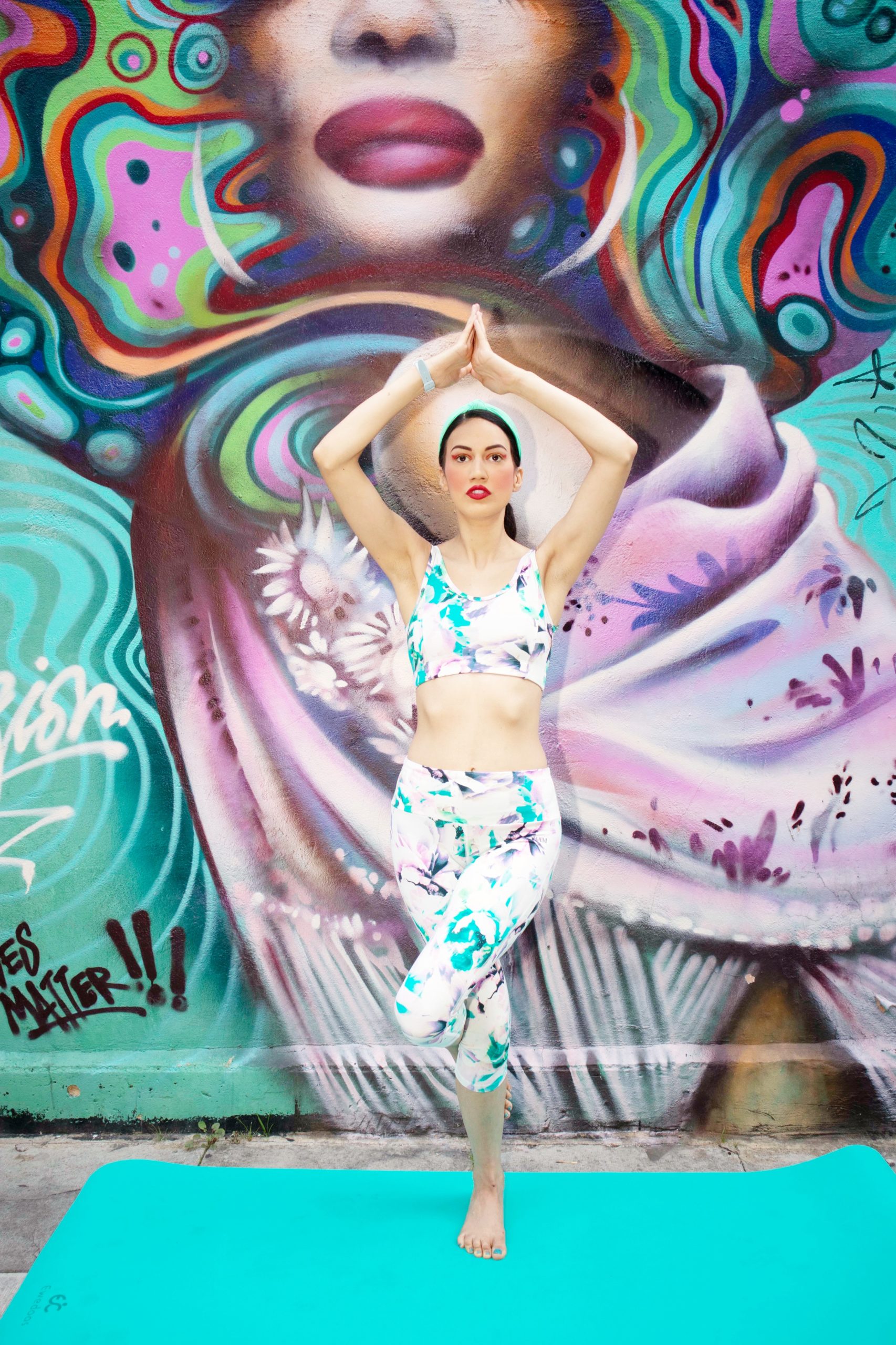
Becoming impact positive has been a game changer for me when trying to test my sustainable fashion tips out. After all, it’s important to fight fashion waste.
Now, what about Depop I hear you ask, is it sustainable? Some critics question its ethical nature, stating that is gentrifying ‘second hand clothing’, while others believe that Depop greenwashes ‘fast fashion’. For me personally, I think a platform that re-sells clothing, provided its done the right way, without exploiting anyone, is a good thing, as it gives old clothes a lease of life. Even if it does re-sell fast fashion, Depop is doing its bit to be more sustainable in the second hand fashion industry. In an official statement it said that it was “shaping a new fashion system” with a two year sustainability plan, with the hopes of becoming carbon neutral by 2021. It went further to say that it wants to continue promoting circular fashion, and provide educational opportunities that can help entrepreneurs sell clothes on their app grow without sacrificing sustainability.
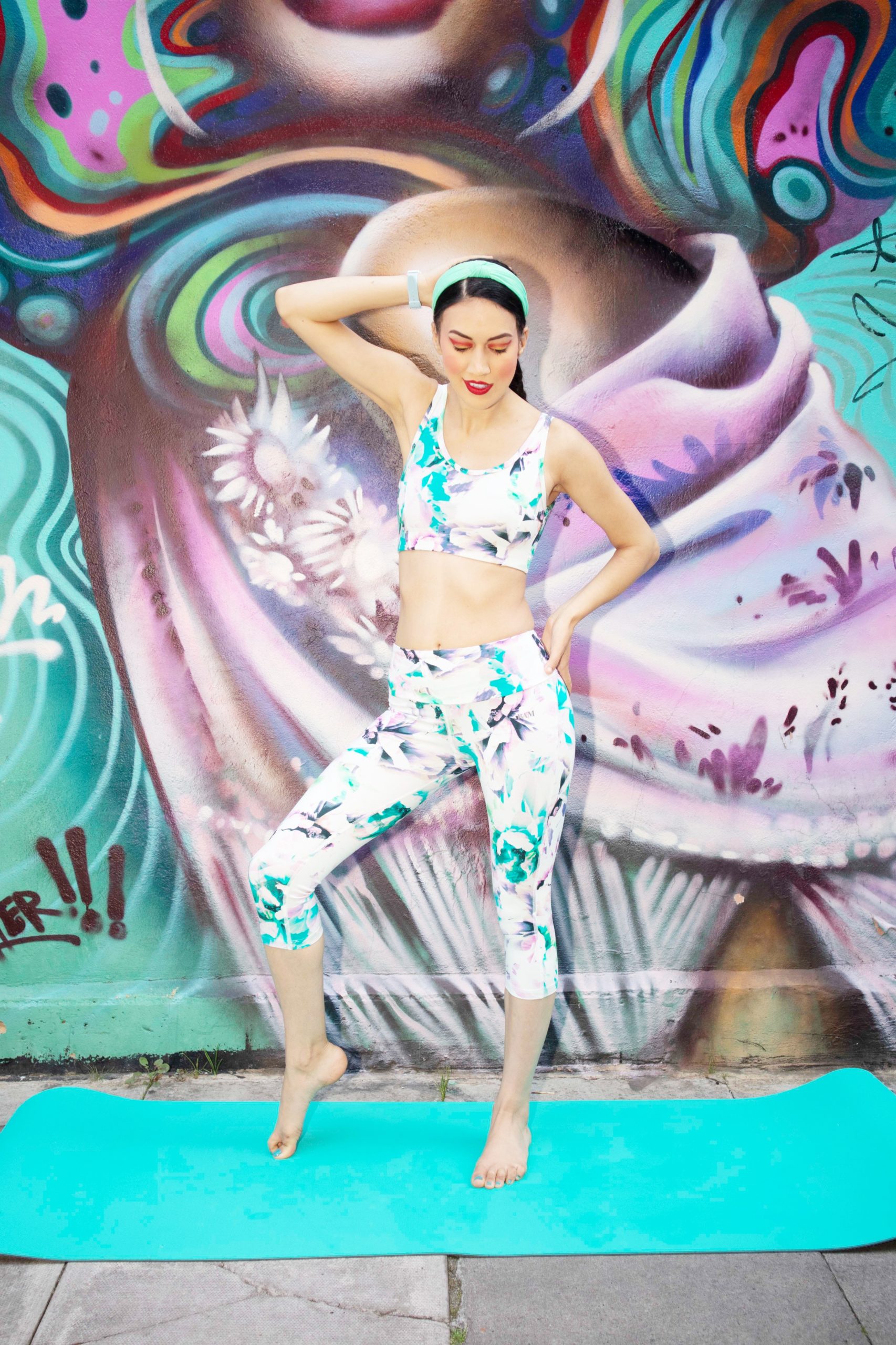
Up-Cycle Old Clothes To Give Them A New Lease Of Life
I am no talented seamstress, but upcycling clothing can really help spruce up new clothing. Whether that is adding sequins, embroidery, or some frills to an outfit, even a simple zip, pocket, or collar can really help change up your look. For example, I had a beautiful dress with the most gorgeous organza overlay, emblazoned with flowers, on a blue satin dress, which I have had since university. Eventually I wanted to re-style the dress, to keep the look current, and allow me to get more usage out of my beloved dress. I got a friend to add on a vintage Peter Pan collar in the same style, while adding puff sleeves (as it was sleeveless), to give it a whimsical, vintage feel. I was thrilled, and continued to wear the dress with the same pride that I was once had. It was my graduation dress, so I didn’t want to donate it just yet. By up-cycling my garment, my friend helped me keep a special memory alive, with an updated, personalized twist. It felt magical.
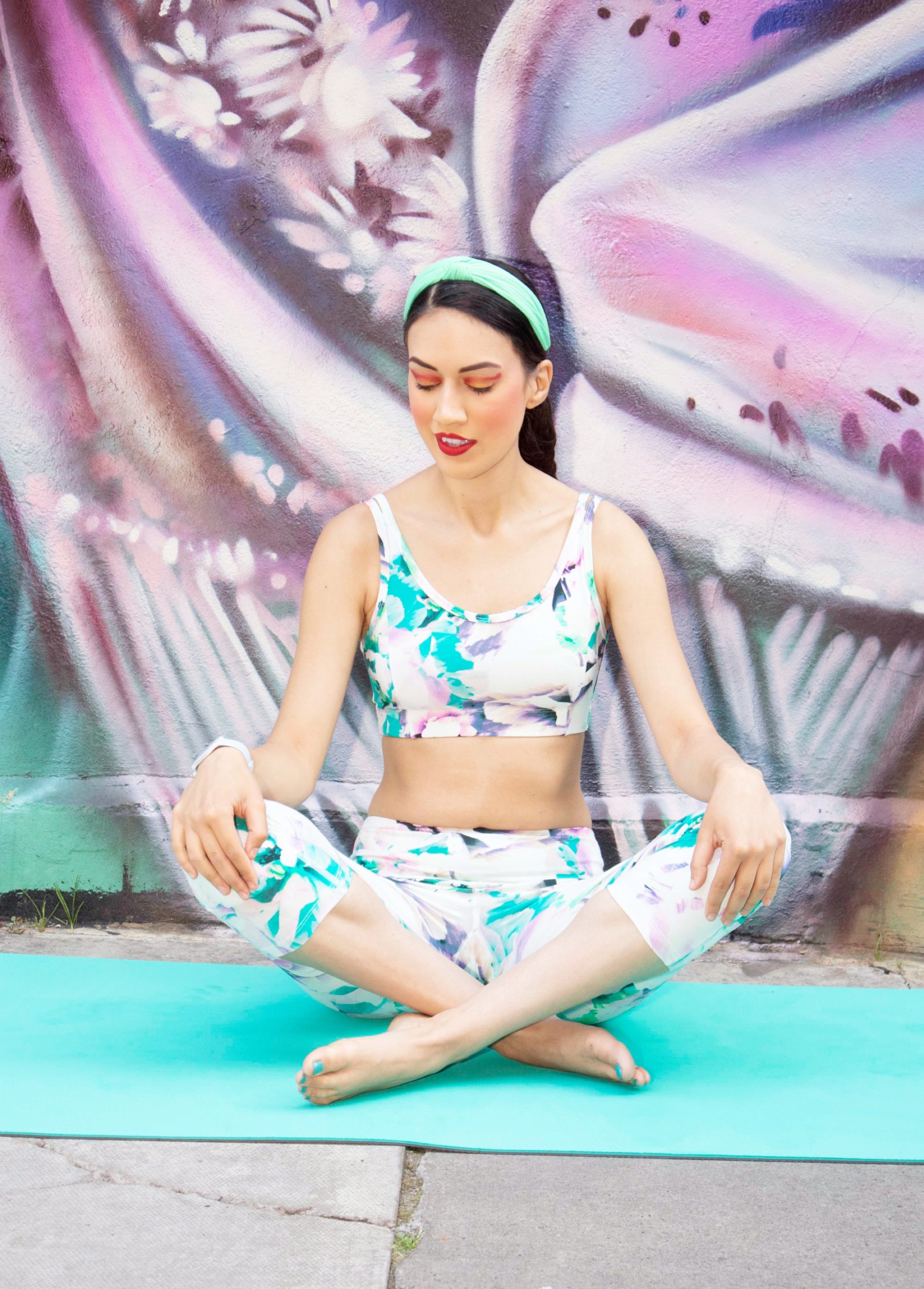
And I am not the only one. If you are a skilled seamstress, you can change hems, neck-lines, sleeve-lengths, and repair old clothing that has holes, rips, or colour fading, with unique and handy hacks. You can even make something new from disused fabric, and have a unique creation in your ethical wardrobe. It could be a print that you adore, whether that be floral, polka dot or tropical, something that holds a special memory but is ‘faulty’, or even something that has been handed down, but needs to be altered. The great thing about upcyling is that you can let your imagination run wild and create the wardrobe of your dreams. From an environmental point of view, upcycling is important as it minimizes the volume of discarded materials and waste being sent to landfill each year. It also reduces the need for production using new or raw materials, which decreases air pollution, water pollution and greenhouse gas emissions.
Upcyling clothing benefits the planet as a whole. This is because the textile and apparel industry is one of the largest polluters globally, and is responsible for 8% of all greenhouse gas emissions globally each year. To put that into perspective, if the trend continues, the number increase by 50% by 2030. That figure is horrifying and is testament to the way that we consume and discard clothes, which has catastrophic consequences. When we resuse, repair, repurpose and upcycle our clothing, we can utilize used clothing responsibly. As a conscious fashion consumer, we can create a more sustainable wardrobe, where the clothing has a loving home. If you are, like me not very good at sewing or crafts, you can also engage in clothing swaps, where you swap clothes with friends and family, where they give you something second hand in return. Or, if you really want something to stay in your wardrobe, find a local sewer who can breathe life into old fabrics. Trust me, you will be spellbound by the results!
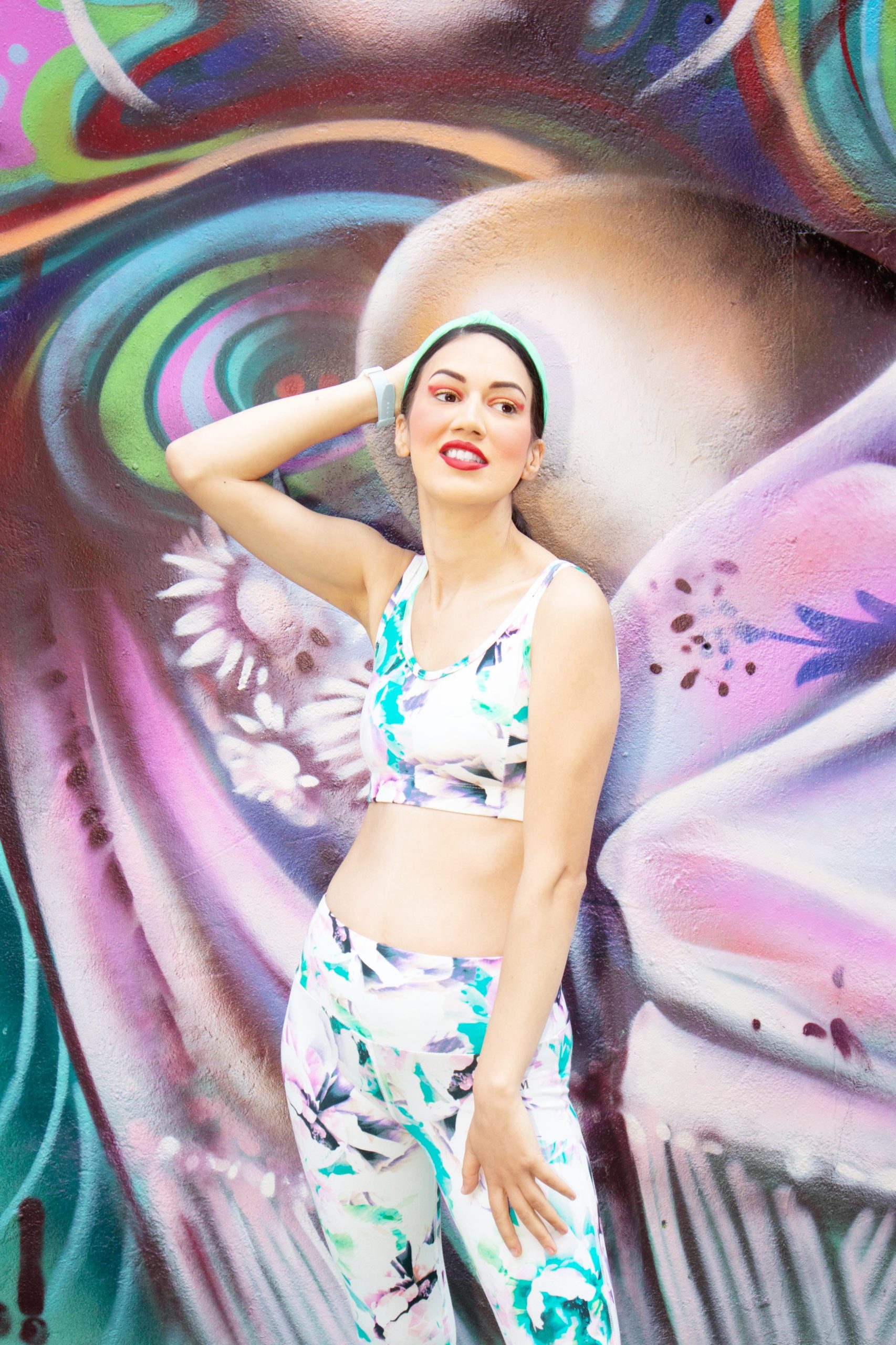
Invest In Sustainable Brands That Care About The Environment
While I shop from a mixture of high-street and sustainable brands, one thing I cannot be faulted on is my dedication to vegan, and cruelty free brands. I wear no animal materials, and support high quality vegan sustainable brands like Bamboo Clothing, Vegan Happy Clothing, and Matt & Natt. While I am on a budget, I try and strike a balance between sustainability, and affordability, ensuring I am careful about the brands I choose to purchase from. For example if a brand sells fur, or mink, I immediately do not buy from them, as I think it is cruel to wear a fabric for the sake of fashion, when it is not used for anything else. While I don’t wear leather or suede, I am aware that these animals are used for meat, dairy, and food, as well as fashion, so it is not their sole purpose. When something is used ‘purely for fashion’, it is an initiative that I cannot support.
This is why it is important to support brands who care about our planet, and our animals. Both deserve to be treated like royalty, and its about time we showed them the love, and adoration that they deserve. When we invest in sustainable brands, we support a ‘slow fashion’ movement, where we minimize our fashion footprint. You have the instant gratfication of being kinder to the planet, and you can feel good knowing that your money is being used to make a greater difference in the world. Sustainable brands don’t just eco-friendly fabrics like hemp, organic cotton or bamboo, but they also use renewable energy to manufacture goods, eliminate disposing materials in unethical ways, and ensures that there are fair labour practices, and fair wages for all employees that are working in factories.

Have you thought much about the brands that you buy from? When we buy from brands like People Tree you are supporting ethical brands who have a wealth of sustainable fashion tips.
But how can you be sure that a clothing brand uses fair labour practices? Well a brand should usually have a disclosure policy where they outline their workers rights, and will be transparent about the factories that are being used. You can also do your own research, and see if they have been flagged for greenwashing, making inaccurate claims, or not following through on their sustainability claims. With that in mind how you can be sure that the brands you are supporting are sustainable? Do you take what they have said at face value? Well to help you out, I have listed some eco-friendly brands below, who I know are sustainable, and have the environments best interests at heart. Although there is more, these are the ones I personally shop from, and have a clear sustainability policy!
- Bamboo Clothing
- Beyond Skin
- Matt & Natt
- People Tree
- Nobody’s Child
- Lucy & Yak
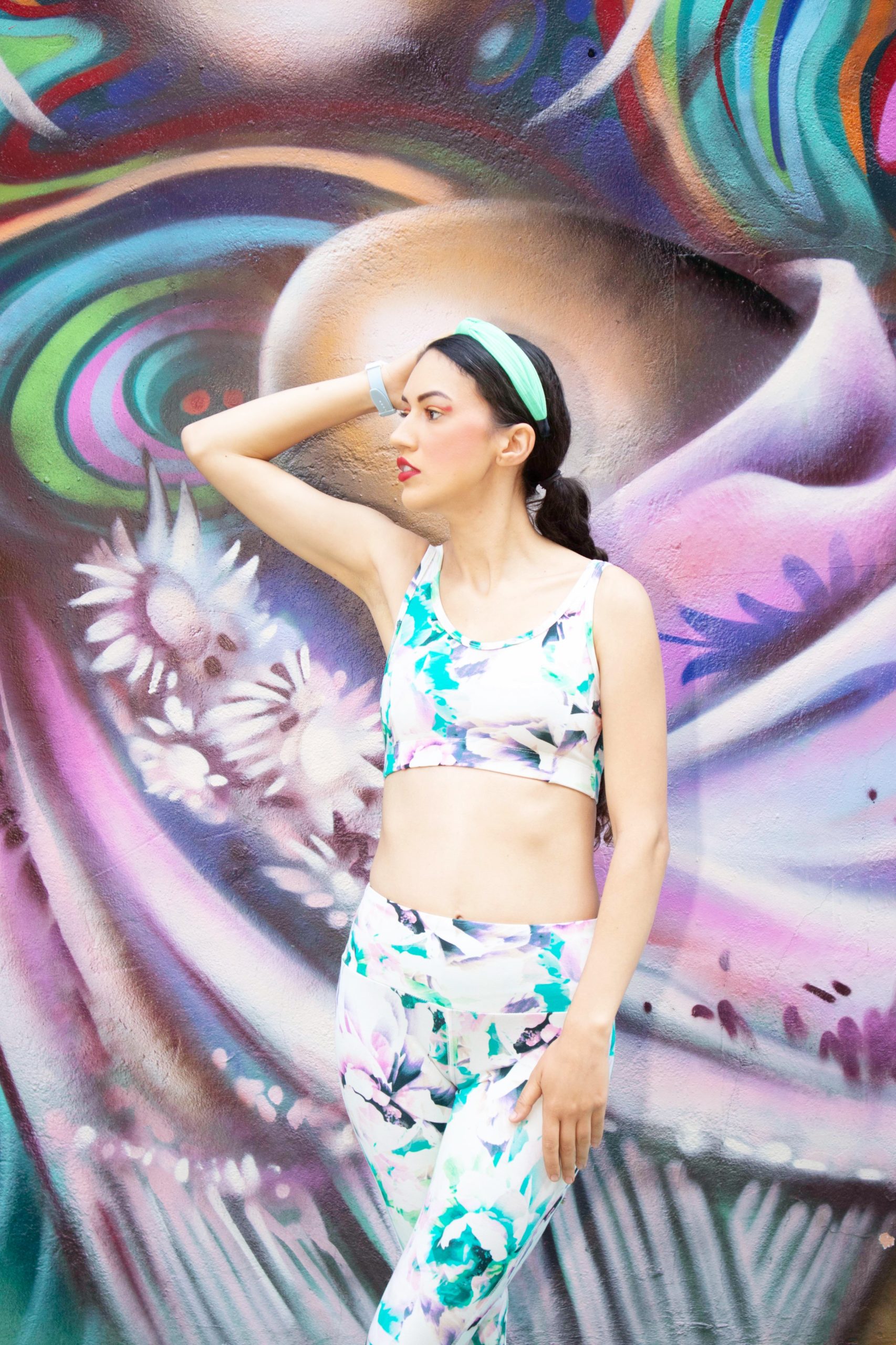
Follow Ethical Fashion Bloggers For Inspiration
As well as supporting sustainable brands, there are a wealth of ethical fashion bloggers, who can educate you on sustainability, as well as living a cruelty-free vegan life. As someone who is vegetarian, and cruelty free, I subsequently follow a lot of vegan food bloggers like Little London Vegan, Rainbow Plant Life and Vegan Brown Ting, who help me find the latest food reccomendations, recipe inspiration, and hacks for waste-free cooking. However from an ethical fashion point of view, there are fashion bloggers who talk about sustainability that I follow, so I can improve the way I buy, shop, and consume clothing products. From accounts that give me ideas on up-cycling, to fashion bloggers who have their own slow fashion brands, here are the fashion blog accounts that you should be following on Instagram.

Izzy Manuel
I love Izzy, because she is a fellow colour lover just like me, and has an extremely satisfying feed. Stylistically she has a great sense of style, and isn’t afraid to experiment with colours, prints and fabrics. From an eco-friendly point of view, she is a sustainable fashion blogger, who upcyles clothing, wears vintage clothing on repeat, and supports slow fashion brands whose products are ethically made, and sourced. Whether she is head to toe in Blonde Gone Rogue, hosting a clothing sale to donate her pre-loved faves, or is educating her audience on sustainability, and how you can be fashionable and ethical, Izzy is your girl. She wants to remind her followers, that it does not matter whether you are wearing ‘last seasons threads’, wearing your clothes more than once is still important. Plus when an outfit looks that good, why wouldn’t you wear it again?
Mikaela Loach
A climate justice activist, Mikaela has a documentary series called ‘ReDress the Future’, where she interviews designers, researchers and campaigners. Her hope is that together they can create a more sustainable, and brighter fashion future. As well as this, she offers extremely educational Instagram posts on climate change activism, the importance of 30 wears (which i’ll chat about below) and documentaries that educated her on sustainability. Mikaela is absolutely fantastic, and I love that she talks openly about repairing old clothes, upcycling, and greenwashing. She has taught me a lot on what greenwashing is, and why it is bad for our planet. Plus, you know she’s my girl when she loves period pants as much as I do!
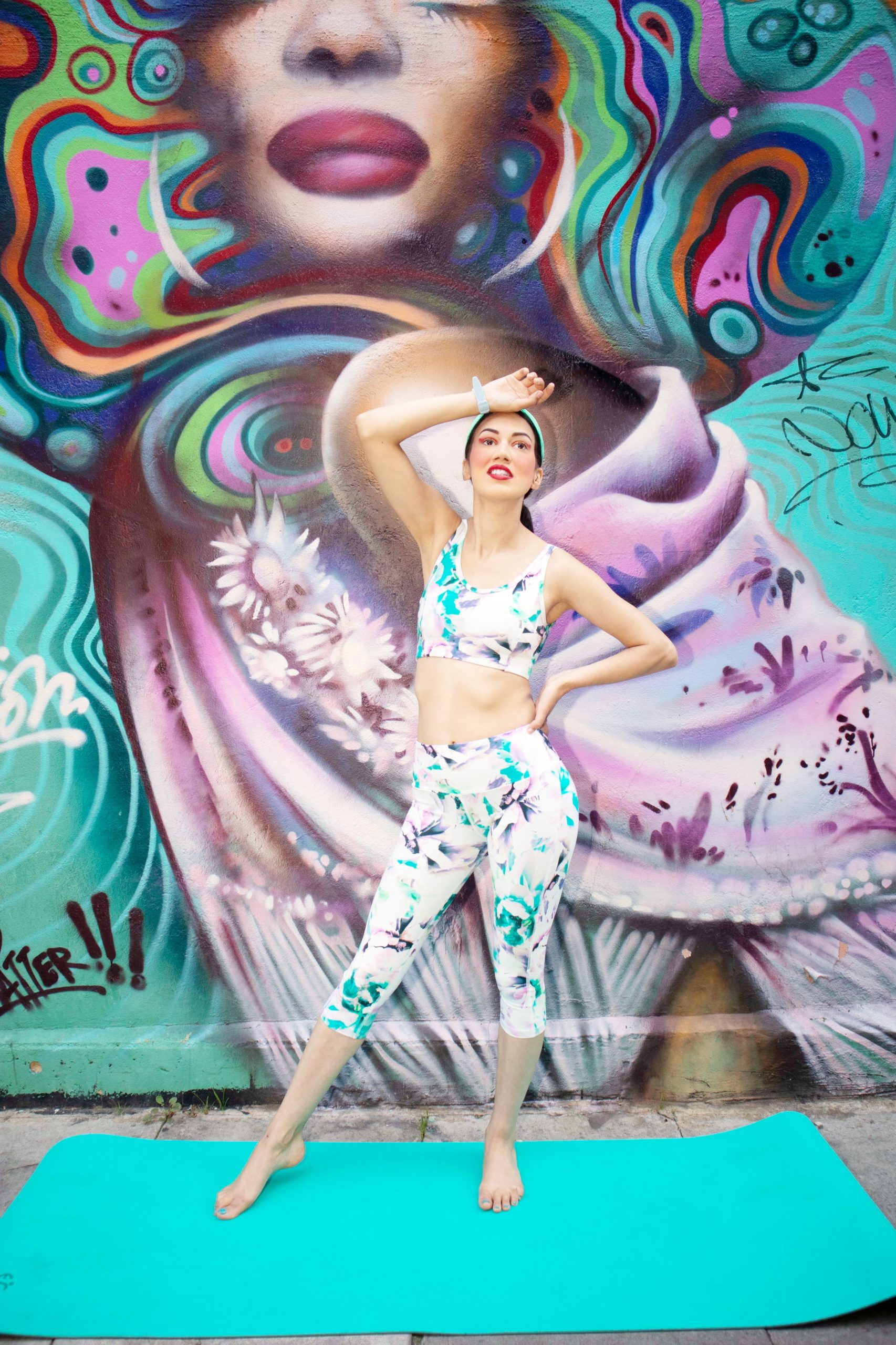
Want to know the secret to an ethical wardrobe? I follow bloggers such as Izzy Manuel for sustainable fashion tips.
Venetia La Manna
Venetia is a fair fashion campaigner and has shown me to look harder at the fashion purchases I am making. She teaches you to change your approach to fashion, and educates you on sustainable fashion brands, the need to donate unused clothes, and to look after your clothes and extend its lifespan. This can be storing your clothes better, reading the care labels, and mending clothes when they break, to create an ethical wardrobe. She also talks about sustainable underwear, which is not something you see often, being that only 2.4% of the underwear market is sustainably sourced. Venetia has introduced me to some awesome sustainable brands!
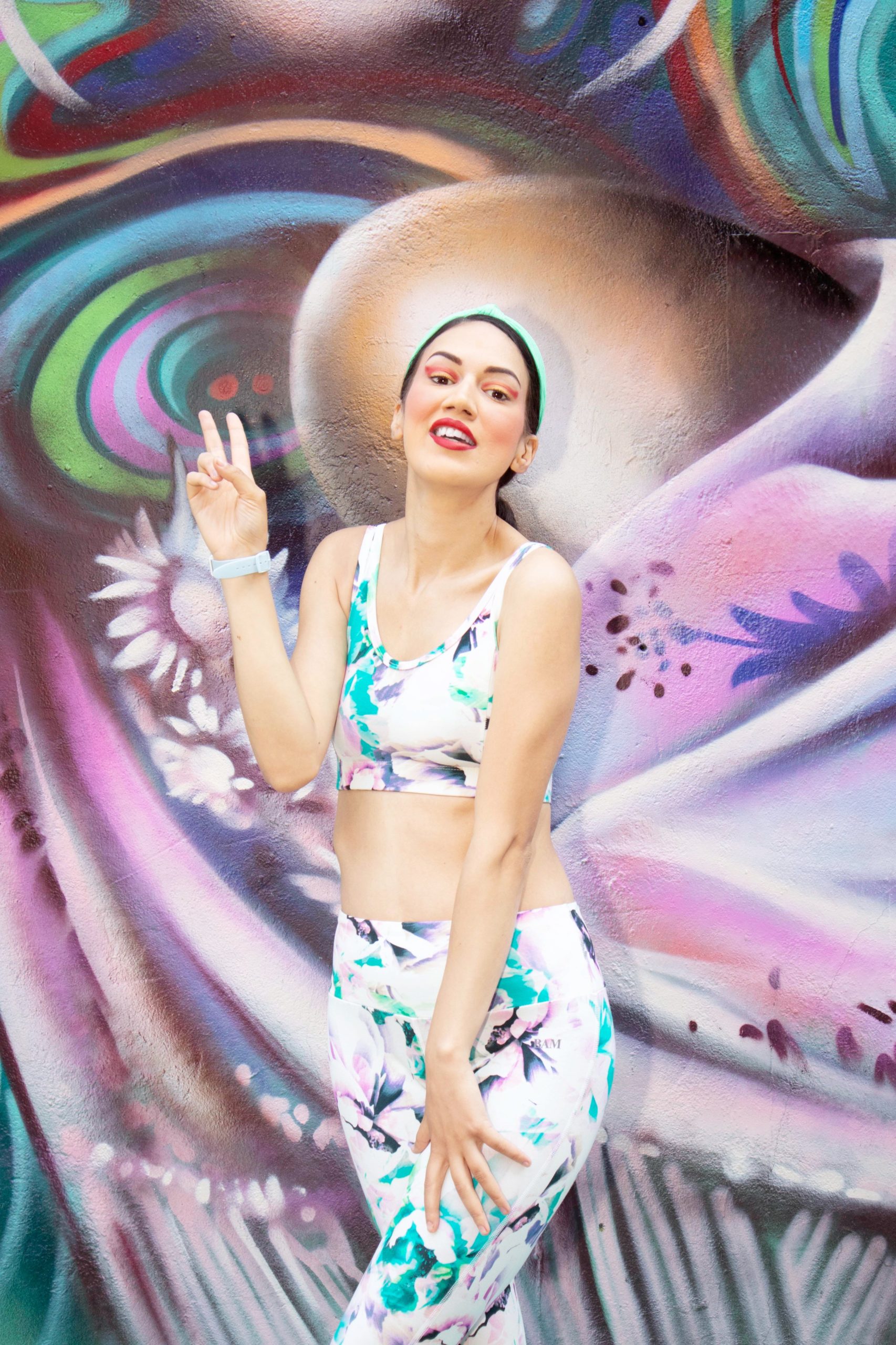
Invest In Quality, Not Quantity And Try The 30 Wears Test
Last but not least, is the importance of investing in quality and quantity. Just like you need friends around you who are loyal, trustworthy, and there for you, you need clothing that is reliable, wearable, and has also got your back. That’s why trying the 30 wears test is so important, because it teaches you to buy ‘consciously’ and put real thought into what you purchase. Livia Firth, the founder of Eco Age (a company that certifies brands for their sustainability) began the #30Wears campaign to encourage us to only buy an item if we really know that we’ll wear it. After all, I don’t know about you, but I have been guilty of buying something in the past, only to never wear it. Now I will only buy something if I can truly see myself wearing it at least 30 times. As Lisa said : “The biggest message is every time you buy something, always think, ‘Will I wear it a minimum of 30 times?’ If the answer is yes, then buy it. But you’d be surprised how many times you say no.”
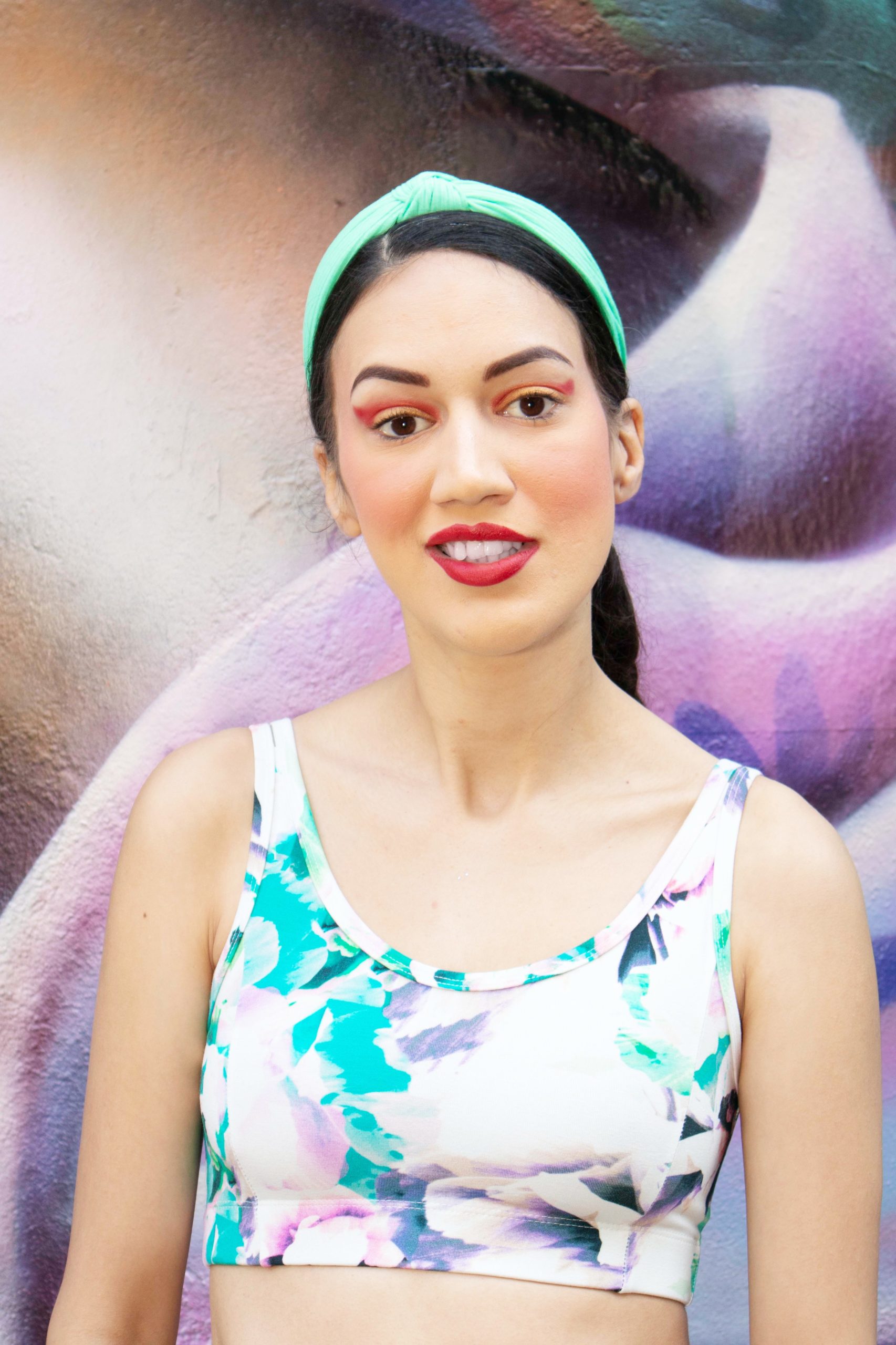
What this shows me is that I should look at my personal style, colours, textures, prints and fabrics that I love, and focus on these rather than on trends I am unsure on. A floral print will always be in my wardrobe as it is my favourite, and I know how to style it, how to wear it, and how to store the clothes that I buy. But something that I might have less of, for example the colour black, will probably go unworn in my wardrobe, as I am a self-confessed colour maven, who is often described by my friends as a walking rainbow. If I know how to style it, and can picture wearing it those 30 times, then it has officially passed the test and can go in my basket without hesitation. Of course it can be easy to buy statement pieces that you are only going to buy once, but to me I would rather buy something that has longevity. For example although the average person will wear a ballgown very rarely, I am the personification of extra, and will quite happily wear the same ballgown over, and over again.
It is also important to choose pieces that can be styled in different ways. For example let’s say you have a pink vegan pleather maxi skirt. You can style it for winter with a fluffy blue jumper crop, baby blue ankle boots, and a lighter pink sleeveless gilet duster. Paired with a baby blue beret, a pink scarf, and a small blue bag you have a winter look that is fashionable but keeps you warm. The skirt can be styled in a number of ways, and whether you go for a dressed down look, a punk look, a princess fantasy, or Barbie realness, to me the skirt is versatile because it goes with a lot of the clothes in my wardrobe. The 30 wears test is useful because it also allows you to think outside the box and remember that accessories are key. A belt, handbag, hat, flower crown or jewellery can really change up the same look.
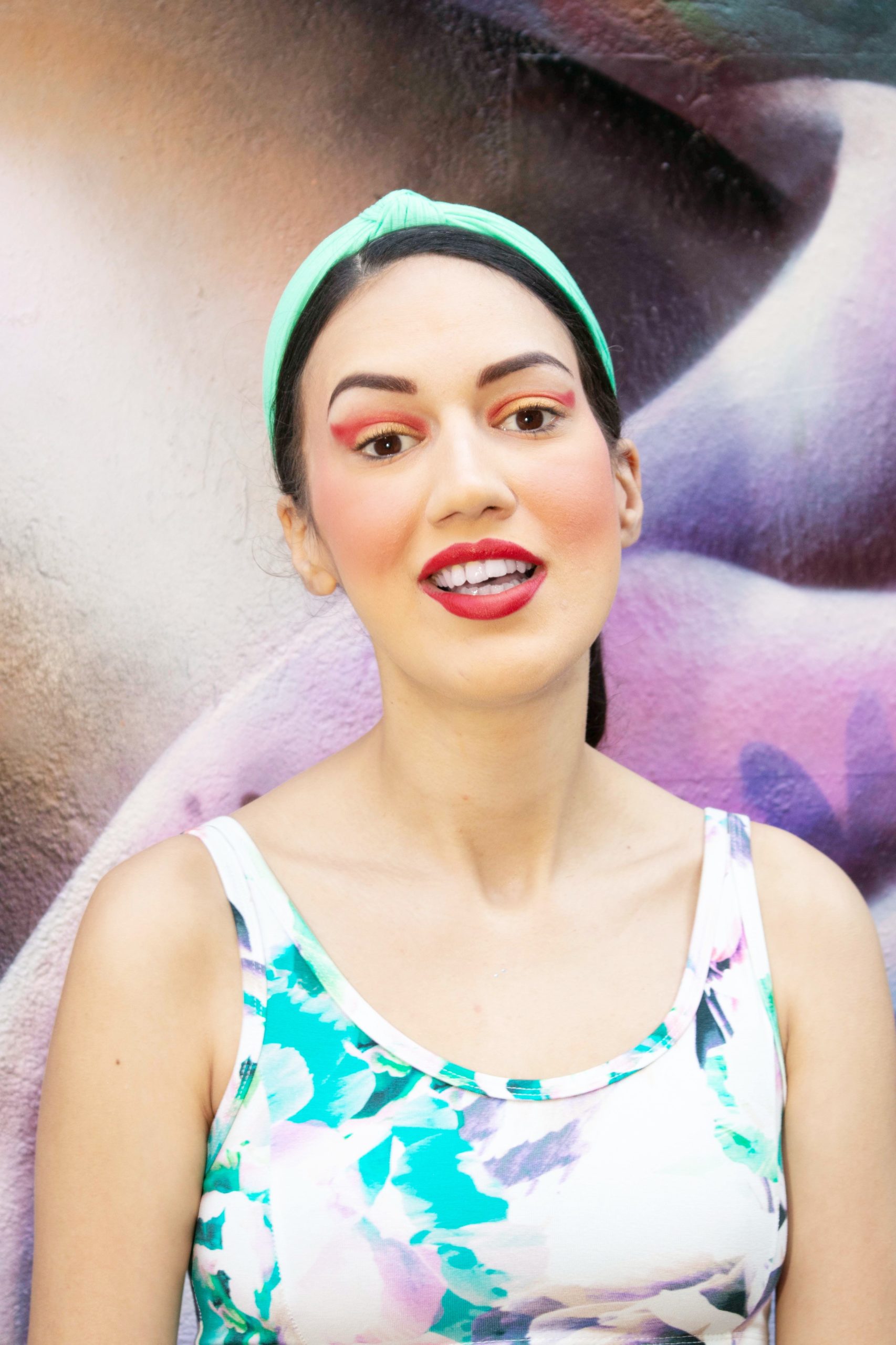
What Are Your Sustainable Fashion Tips For A More Ethical Wardrobe?
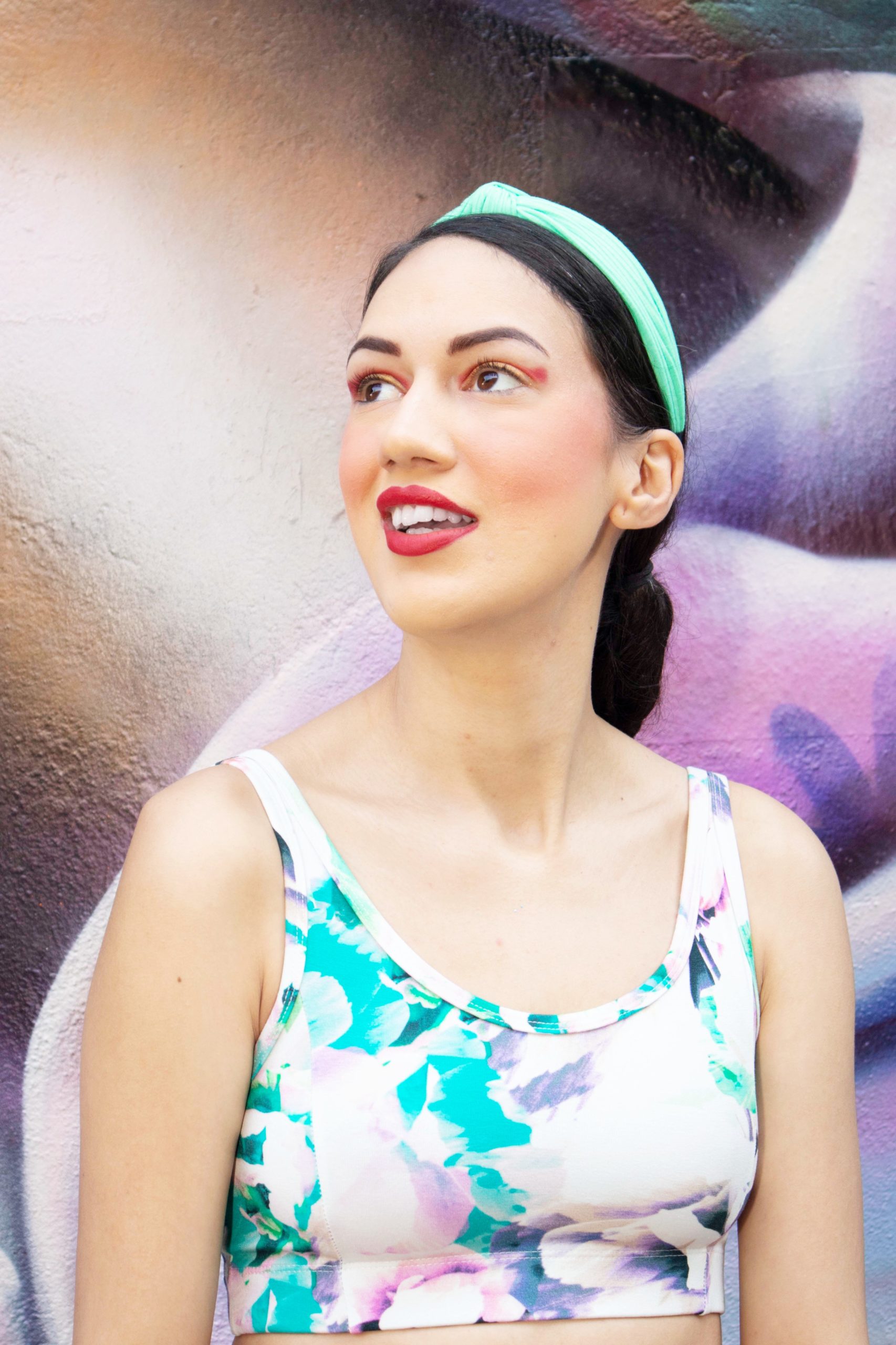
As an eco-conscious consumer one of the best sustainable fashion tips is investing in brands that shares the same values as you do.
*Disclaimer
Please note this is a collaborative post but all thoughts are my own and are not affected by monetary compensation. I would love to know what your sustainable fashion tips are for creating a more ethical wardrobe. Is there anything I have missed out on? Sound off in the comments below!
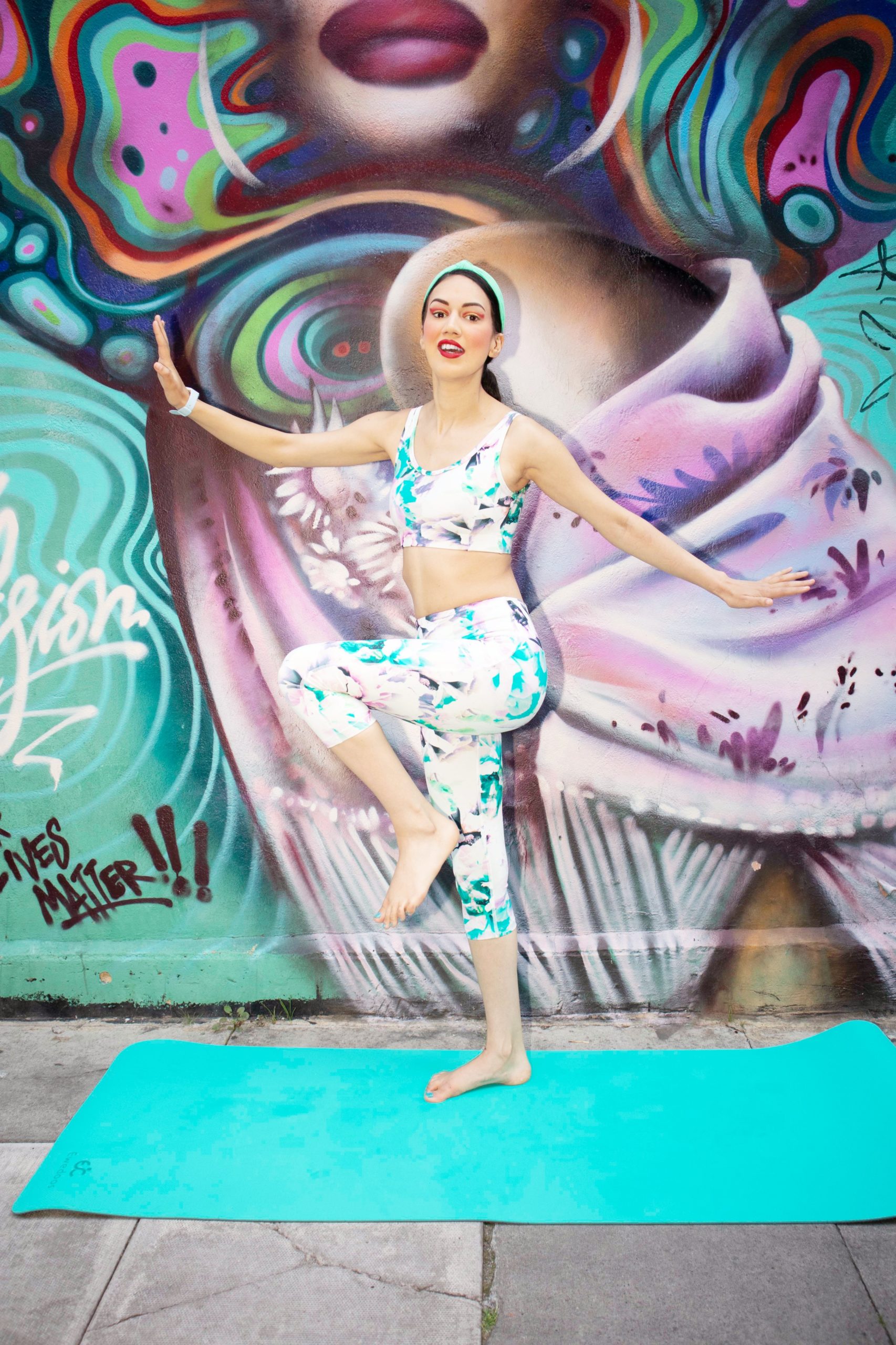
P.S I have never been super confident in my body, and often shy away from sets like this which shows my stomach. I feel great that Bamboo Clothing has allowed me to step outside of my comfort zone!
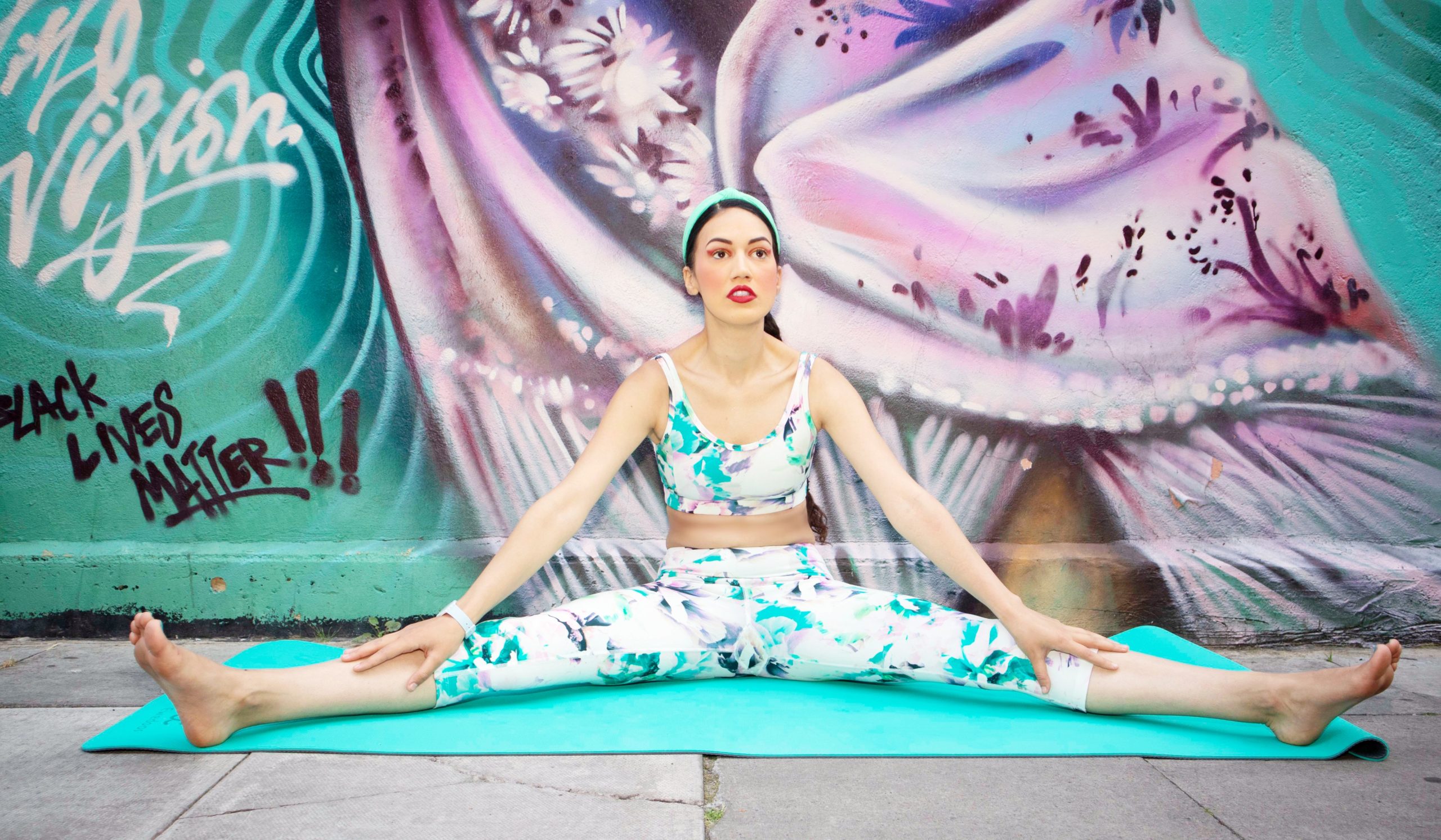
To me an ethical wardrobe means choosing sustainable fashion tips that support animals, humans and the environment.
I love organising my wardrobe so your sustainable fashion tips on creating a rotating wardrobe I love. Xx
Ooh, this is such a great set from Bamboo Clothing. I am trying to have more sustainable and ethical fashion in my wardrobe. My daughter loves to buy from Goodwill and donate to Goodwill so clothes don’t go to waste.
I love bamboo as a fabric. The fact that you can go 3 wears with this beatiful yoga set is fabulous!
I love this bamboo yoga set and also your vibrant street art photos! They are so cool, great backdrop and makeup! Looks fab!
I try to be eco-friendly when buying my clothes and love shopping at thrift stores. I have tried bamboo sheets but not exercise clothes.
Not only is this set from Bamboo Clothing super cute, but I also love how many wears you can get out of it.
I’d love to try Bamboo Clothing! That peony pattern is beautiful, your photos are gorgeous and I love the colors.
Same here, I support products that are cruelty free. Also side note, what a nice background you got there. Love the street art!
I love these tips for sustainability – it is so hard sometimes to navigate how to be ethical with your money and how to support ethical fashion companies.
I love brands that care for people, animals, and the environment. They’re mostly personal care products though but I’m thinking of supporting clothing brands that are also ethical.
You have some really good tips here. I think it’s important to find the right clothing that fits you well. I personally love the one you have on in these photos. It looks comfy and great for workouts.
These are great sustainable fashion tips for an ethical wardrobe! I am working on making my wardrobe more ethical, slowly as I buy new pieces! This has given me some great places to look when I need to replace something!
It is great that you have saved clothes for so long and made a lot of those ecofriendly choices. It is nice to think about sustainability in all walks of life.
This is such an important topic and so rarely talked about. I remember a moment in the 1990s when we started addressing the abominable labor practices and sweatshops of many clothing manufacturers, lately, it seems like even this discussion has died down. Choosing clothes made from sustainable materials, upcycling old clothes, thrifting, and staying informed about the labor practices of fashion brands are all great steps toward more Earth-friendly consumerism.
Such great advice and photos 👌🏻 I don’t agree with this notion too, that you should only be seen in the same outfit once! I wear the same outfit many times. But due to allergic issues, I don’t wear second hand clothing. I’ll check out Bamboo Clothing. The set looks gorgeous 👌🏻
Wow finding the clothes that fit you well is very important. And I like the one you have on these photos, and the street art on the background looks beautiful. Great tips and thanks for sharing.
Love the rotating closet idea! I am always organizing and reorganizing my closet and this a great plan with sustainability in mind! Also love the sustainable brand inspiration!
Thanks so much for sharing all this information and tips on how to be a friendly eco-shopper! I find it very helpful. And I love your photos!